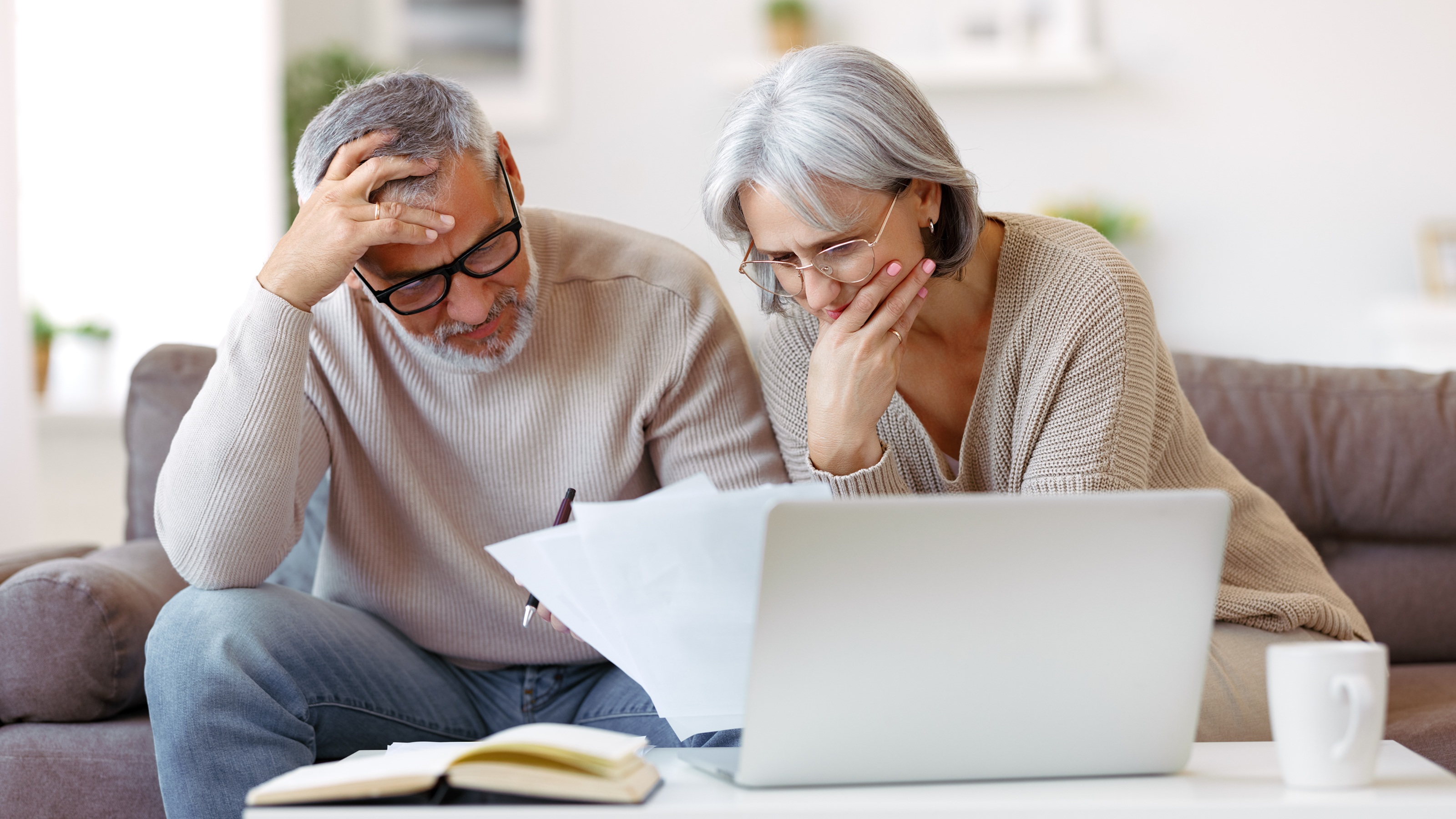Kiplinger Interest Rates Outlook: Fed Cuts Rates, with More Reductions Expected
Despite little progress on inflation, the Fed has cut rates to encourage job growth.

Kiplinger’s Economic Outlooks are written by the staff of our weekly Kiplinger Letter and are unavailable elsewhere. Click here for a free issue of The Kiplinger Letter or to subscribe for the latest trends and forecasts from our highly experienced Kiplinger Letter team.
The Federal Reserve cut short-term interest rates by a quarter-point, to 3.9%, on October 29, and will likely cut another quarter-point at the next meeting on December 10. The benign inflation report released last Friday allowed the Fed to focus on boosting the economy, given the currently soft labor market. Amid the lack of official employment data due to the government shutdown, the Fed is making the assumption that the weak job gains reported in the August release are continuing.
Long-term rates ticked up, however, because Fed Chair Jerome Powell forcefully insisted at his press conference that the outcome of the December policy meeting is not predetermined. Market participants saw that as making another rate cut less likely, but should rather have seen it as Powell simply maintaining the Fed’s freedom of action. A cut on December 10 is still more likely than not. However, at some point, probably at the January 28 meeting, the Fed will stand pat in order to reassess whether it has arrived at the “neutral” interest rate that is no longer restricting the economy. The Fed may still cut rates next spring, but it won’t be automatic or happen on a schedule.
From just $107.88 $24.99 for Kiplinger Personal Finance
Become a smarter, better informed investor. Subscribe from just $107.88 $24.99, plus get up to 4 Special Issues

Sign up for Kiplinger’s Free Newsletters
Profit and prosper with the best of expert advice on investing, taxes, retirement, personal finance and more - straight to your e-mail.
Profit and prosper with the best of expert advice - straight to your e-mail.
The 10-year Treasury rate is still hovering around 4%. It may decline a little, depending on future job reports, but at some point will tick back up to 4.5%, due to ongoing inflation reports that are still too high, plus renewed focus on the mounting borrowing needed to finance the federal government’s deficits. The 10-year yield is often used as the benchmark for setting mortgage and auto loan rates.
The bond market’s yield curve will become fully upward-sloping sometime next year. Bond investors’ concern that an economic slowdown looms is shown by the fact that current one- to seven-year Treasury notes have lower yields than short-term Treasury bills, which mature in a few months. But 20- and 30-year bond yields have picked up more than the 10-year yield has in recent months, indicating that both long-term inflation and government deficits are a rising concern among bond traders. The result is a U-shaped yield curve, with higher short and long yields than medium-term ones. As the uncertainties of tariff policy gradually get resolved, fears of a recession will diminish and medium-term rates are likely to pick up. The long end of the yield curve is likely to stay elevated. We expect short rates to fall next year, so the yield curve by the end of 2026 is likely to be consistently upward-sloping along its entire length, for the first time since 2021.
Mortgage rates have dipped as the lack of hiring in the labor market has fueled recession concerns and weighed on the 10-year Treasury’s yield. Thirty-year fixed-rate mortgages are currently around 6.3%. Fifteen-year loans are at 5.5% for borrowers with good credit. If the economy weakens more, then rates should decline further. Mortgage rates are still higher than normal, relative to Treasuries, but as the Fed cuts short-term rates, that will boost banks’ lending margins, which should eventually lower mortgage rates a bit, too.
Top-rated corporate bond yields have also been following Treasury yields. AAA-rated long-term corporate bonds are yielding 4.6%, BBB-rated bonds are at 5.0%, and CCC-rated bonds have held steady at 11.8%. CCC-rated bond rates tend to rise when the risk of recession rises, and fall when either the economy strengthens or the Fed cuts rates, which eases the financial burden of businesses that are heavily indebted.
Related Content
Profit and prosper with the best of Kiplinger's advice on investing, taxes, retirement, personal finance and much more. Delivered daily. Enter your email in the box and click Sign Me Up.

David is both staff economist and reporter for The Kiplinger Letter, overseeing Kiplinger forecasts for the U.S. and world economies. Previously, he was senior principal economist in the Center for Forecasting and Modeling at IHS/GlobalInsight, and an economist in the Chief Economist's Office of the U.S. Department of Commerce. David has co-written weekly reports on economic conditions since 1992, and has forecasted GDP and its components since 1995, beating the Blue Chip Indicators forecasts two-thirds of the time. David is a Certified Business Economist as recognized by the National Association for Business Economics. He has two master's degrees and is ABD in economics from the University of North Carolina at Chapel Hill.
-
 December Fed Meeting: Live Updates and Commentary
December Fed Meeting: Live Updates and CommentaryThe December Fed meeting is one of the last key economic events of 2025, with Wall Street closely watching what Chair Powell & Co. will do about interest rates.
-
 This Is Why Investors Shouldn't Romanticize Bitcoin
This Is Why Investors Shouldn't Romanticize BitcoinInvestors should treat bitcoin as the high-risk asset it is. A look at the data indicates a small portfolio allocation for most investors would be the safest.
-
 I'm a Federal Benefits Pro: I Answer These 2 Questions a Lot
I'm a Federal Benefits Pro: I Answer These 2 Questions a LotMany federal employees ask about rolling a TSP into an IRA and parsing options for survivor benefits, both especially critical topics.
-
 December Fed Meeting: Live Updates and Commentary
December Fed Meeting: Live Updates and CommentaryThe December Fed meeting is one of the last key economic events of 2025, with Wall Street closely watching what Chair Powell & Co. will do about interest rates.
-
 Why Investors Shouldn't Romanticize Bitcoin, From a Financial Planner
Why Investors Shouldn't Romanticize Bitcoin, From a Financial PlannerInvestors should treat bitcoin as the high-risk asset it is. A look at the data indicates a small portfolio allocation for most investors would be the safest.
-
 I'm a Financial Pro Focused on Federal Benefits: These Are the 2 Questions I Answer a Lot
I'm a Financial Pro Focused on Federal Benefits: These Are the 2 Questions I Answer a LotMany federal employees ask about rolling a TSP into an IRA and parsing options for survivor benefits, both especially critical topics.
-
 Private Credit Can Be a Resilient Income Strategy for a Volatile Market: A Guide for Financial Advisers
Private Credit Can Be a Resilient Income Strategy for a Volatile Market: A Guide for Financial AdvisersAdvisers are increasingly turning to private credit such as asset-based and real estate lending for elevated yields and protection backed by tangible assets.
-
 Smart Money Moves Savers Should Make in 2026
Smart Money Moves Savers Should Make in 2026These steps will get you on the road to achieving your 2026 savings goals.
-
 5 RMD Mistakes That Could Cost You Big-Time: Even Seasoned Retirees Slip Up
5 RMD Mistakes That Could Cost You Big-Time: Even Seasoned Retirees Slip UpThe five biggest RMD mistakes retirees make show that tax-smart retirement planning should start well before you hit the age your first RMD is due.
-
 I'm a Wealth Adviser: My 4 Guiding Principles Could Help You Plan for Retirement Whether You Have $10,000 or $10 Million
I'm a Wealth Adviser: My 4 Guiding Principles Could Help You Plan for Retirement Whether You Have $10,000 or $10 MillionRegardless of your net worth, you deserve a detailed retirement plan backed by a solid understanding of your finances.
-
 A Retirement Triple Play: These 3 Tax Breaks Could Lower Your 2026 Bill
A Retirement Triple Play: These 3 Tax Breaks Could Lower Your 2026 BillGood news for older taxpayers: Standard deductions are higher, there's a temporary 'bonus deduction' for older folks, and income thresholds have been raised.